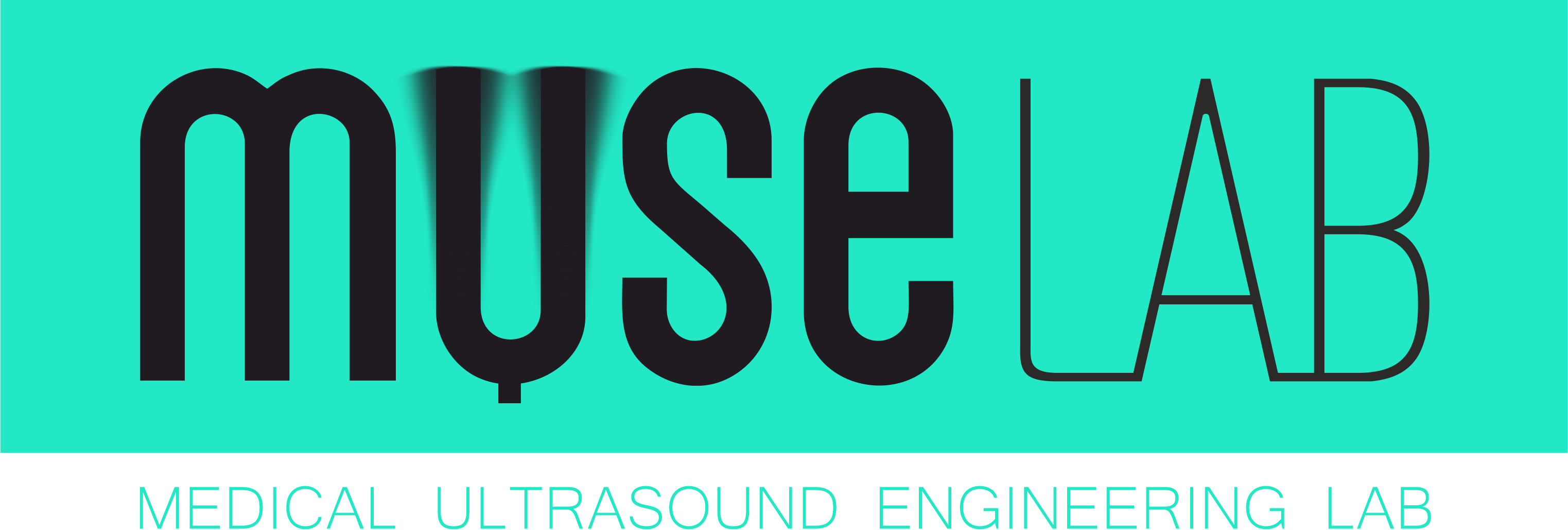This repository contains the code and resources for the research project on segmenting histotripsy ablation zones in ultrasound images using DeepLabV3 (and other experimental models) with a combined Dice-Focal loss function.
Authors: Shreyans Jain, Soham Gaonkar, Aditya Borate, Mihir Agarwal, Muskan Singh, Prof. Kenneth B. Bader, Prof. Himanshu Shekhar
Contact: [email protected], [email protected], [email protected], [email protected], [email protected]
- Introduction
- Motivation
- Methodology
- Repository Structure
- Experimental Setup
- Results
- Challenges Faced
- Future Work
- Citation
- Acknowledgments
Histotripsy is an emerging non-invasive ultrasound-based therapy that uses high-amplitude focused ultrasound pulses to mechanically ablate tissue without heat or incisions. Real-time monitoring and assessment of the ablated region are crucial for effective treatment. This project explores deep learning-based segmentation approaches, primarily focusing on DeepLabV3 with a combined Dice-Focal loss, to accurately identify and segment histotripsy-induced ablation zones from B-mode ultrasound images.
- Current imaging modalities like MRI/CT for monitoring histotripsy ablation are slow, costly, and not ideal for real-time feedback.
- Ultrasound imaging is a readily available, cost-effective, and real-time alternative.
- Accurate segmentation of the ablated region in ultrasound images is challenging due to low contrast, speckle noise, sparse bubble regions (especially in early-pulse frames), and variability in bubble cloud appearance.
- Our Goal: To enable real-time assessment of histotripsy ablation using ultrasound imaging alone by developing robust segmentation models.
The overall workflow involves: Data Acquisition → Data Annotation → Preprocessing & Augmentation → Supervised Learning → Evaluation.
- The primary model discussed in our poster is DeepLabV3 with a ResNet101 backbone, trained from scratch in a fully supervised setting (
code_files/model/deeplabv3_torchvision.py,code_files/model/deeplabv3p.py). - DeepLabV3 utilizes atrous (dilated) convolutions and Atrous Spatial Pyramid Pooling (ASPP) to capture multi-scale context effectively.
- The repository also includes implementations or experiments with other architectures such as U-Net++ (
unetpp.py), FPN (fpn.py), Mask R-CNN (maskrcnn.py), and a ResNet18-based CNN (resnet18cnn.py), found in thecode_files/model/directory.
To handle class imbalance and enhance boundary precision, we primarily employ a combined Dice + Focal Loss (code_files/loss/dice_focal.py):
L_Total = λ_Dice * L_Dice + λ_Focal * L_Focal
- Dice Loss: Maximizes overlap in sparse masks (
code_files/loss/dice.py).DiceLoss(y, p̂) = 1 - (2p̂y + ε) / (p̂ + y + ε) - Focal Loss: Emphasizes hard-to-classify pixels.
FocalLoss(p_t) = -α_t (1 - p_t)^γ log(p_t) - Other experimental loss functions like Asymmetric Tversky Loss (
asymmetric_tversky.py) and a Dice-Focal variant with pulse prior (dice_focal_pulse_prior.py) are also available in thecode_files/loss/directory.
adi776borate-bubblesegmentation/
├── README.md
├── code_files/ # Main Python scripts and modules
│ ├── config.py
│ ├── dataloader.py
│ ├── latest_copy.ipynb
│ ├── metric.py
│ ├── run_all.py
│ ├── test.py
│ ├── train.py
│ ├── utils.py
│ ├── zcleanup.py
│ ├── loss/
│ │ ├── __init__.py
│ │ ├── asymmetric_tversky.py
│ │ ├── dice.py
│ │ ├── dice_focal.py
│ │ └── dice_focal_pulse_prior.py
│ └── model/ # Model architecture implementations
│ ├── __init__.py
│ ├── deeplabv3_torchvision.py
│ ├── deeplabv3p.py
│ ├── fpn.py
│ ├── maskrcnn.py
│ ├── resnet18cnn.py
│ └── unetpp.py
├── Data/ # Dataset
│ ├── Label_2/
│ ├── Label_Test_2023April7/
│ ├── US_2/
│ └── US_Test_2023April7/
└── dump/ # Additional/older Jupyter notebooks
├── bubblesegment.ipynb
└── Only_testing.ipynb
- B-mode ultrasound images were collected during histotripsy experiments in collaboration with UChicago Radiology.
- Experiments: Agarose phantoms and ex vivo porcine kidneys.
- Ultrasound parameters: 1 MHz transducer, 35 MPa, 20 µs pulses @ 50 Hz.
- Ground truth: Annotated using co-registered digital images.
- Dataset split: 6 datasets → 880 train / 400 test / holdout set.
- The
Data/directory shows an example structure:- Training Images:
Data/US_2/ - Training Labels:
Data/Label_2/ - Test Images:
Data/US_Test_2023April7/ - Test Labels:
Data/Label_Test_2023April7/
- Training Images:
- The
- Unlabelled data for unsupervised exploration was provided by Vishwas Trivedi (PhD student, IIT Gandhinagar).
- Data Augmentation & Oversampling: Techniques were applied to increase model robustness, especially for early-pulse frames. Logic for this is within
code_files/dataloader.py.
Our proposed method (DeepLabV3 with Dice-Focal Loss) demonstrates significant improvements.
-
Quantitative Metrics:
Metric Our Results Prior SOTA Results Global Accuracy 0.97525 0.95555 Mean Accuracy 0.90524 0.69524 Mean IoU 0.82537 0.76461 Weighted IoU 0.93525 0.91648 (Evaluation metrics are computed using
code_files/metric.py)
- Ground truth annotation variability.
- Difficulty in segmenting sparse bubble regions from initial pulses.
- Scarcity of annotated histotripsy data.
- Improve early-pulse segmentation (e.g., using curriculum learning).
- Integrate attention mechanisms and adaptive loss strategies.
- Explore unsupervised/semi-supervised learning with limited labels.
- Miao K, Basterrechea KF, Hernandez SL, Ahmed OS, Patel MV, Bader KB. Development of Convolutional Neural Network to Segment Ultrasound Images of Histotripsy Ablation. IEEE Trans Biomed Eng. 2024 Jun;71(6):1789-1797. doi: 10.1109/TBME.2024.3352538. Epub 2024 May 20. PMID: 38198256.
- Chen, L., Papandreou, G., Schroff, F., & Adam, H. (2017). Rethinking Atrous Convolution for Semantic Image Segmentation. ArXiv. https://arxiv.org/abs/1706.05587
- This work was conducted at the MUSE LAB, IIT Gandhinagar.
- We thank UChicago Radiology for collaboration and experimental data.
- We acknowledge Vishwas Trivedi (IIT Gandhinagar) for unlabelled ultrasound data.


